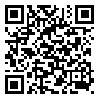BibTeX | RIS | EndNote | Medlars | ProCite | Reference Manager | RefWorks
Send citation to:
URL: http://refahj.uswr.ac.ir/article-1-1923-en.html

 , Alireza Kaldi
, Alireza Kaldi 
 , Hossein Mohagheghi Kamal
, Hossein Mohagheghi Kamal 
 , Amene Setare forouzan
, Amene Setare forouzan 
 , Masood Salehi
, Masood Salehi 

Objectives: Health of society is based on its individual. Person’s healthy life is product of interaction between personal choices and their enveloping socioeconomic environment. In 1948, the World Health Organization identified social well-being as one of several facets of an individual’s overall health. Social well-being is defined as an individual’s self-report of the quality of their relationship with other people, their neighbourhood, and their communities. Social well-being is operationalized as an individual’s perceptions of their integration into society, acceptance of other people, coherence of society and social events, one’s sense of contribution to society, and the potential and growth of society. The Learning of social skills and membership in a social network enable individual to interact effective with others. These are indicators of behavioural health and social well-being. This study aims to major Social Wellbeing and explore its relationship with social demographic variable. Method: this study design as a cross sectional. The sample size of this study was 1024 students of university of social welfare and rehabilitation. 168 students agreed to enter the study. To collect data 2 different questionnaires was applied: social demographic and Social Well-being questionnaires. Data analyzes was done with One-Way ANOVA, Pearson Correlation, T and Mann Whiney test results. Statistically analyses were done by spss. Findings: In terms of educational departments, students of clinical psychological and Speech Therapy showed in tern, the highest and least Social Well-being scores but not find meaningful difference between educational departments. MST student’s Social Well-being scores were higher than BS. Findings showed marriage student’s Social Well-being scores were higher than singles as marriage student’s Social Well-being scores were 84.84 and for single’s were 66.63. And male students had higher scores than female as male students Social Well-being scores were 86 and female students Social Well-being scores were 67.6. Also, averages of Social Well-being scores for were membership in association were 82.13 and for students were not membership in association were 66.20 and this difference was meaningful. Results: The finding of this study showed significant relationship between social well-being and some social demographic variable among students. Social Wellbeing had significant relationship with material status, education, sex, membership in association, and employment status, but not with education major, parent’s education and student’s age.
Received: 2015/08/27 | Accepted: 2015/08/27 | Published: 2015/08/27
| Rights and permissions | |
 |
This work is licensed under a Creative Commons Attribution-NonCommercial 4.0 International License. |



